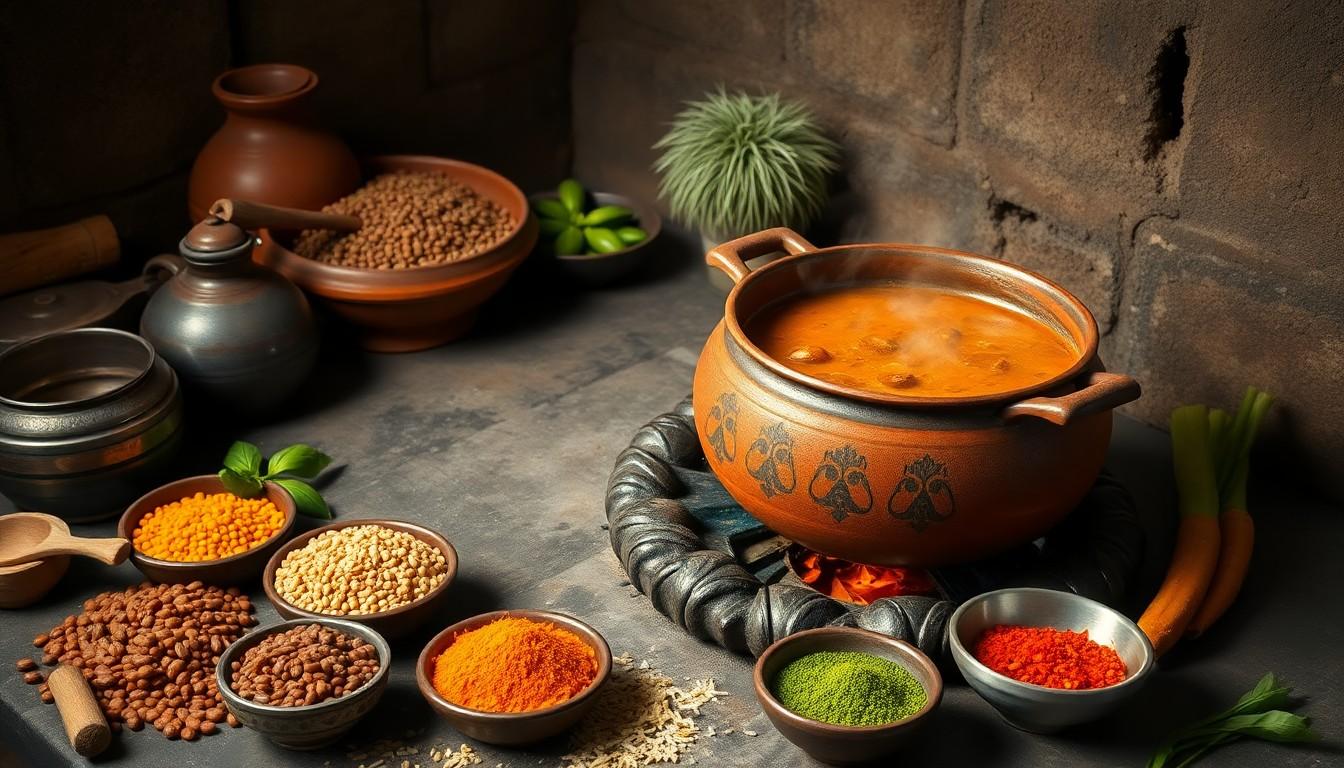In the vibrant tapestry of Indian culture, few things spark curiosity quite like chagodhiya. This unique dish, often overlooked, is a delightful blend of flavors that promises to tantalize taste buds and ignite culinary adventures. Imagine a plate that’s not just food but a celebration of tradition, history, and a sprinkle of magic.
Overview of Chagodhiya
Chagodhiya serves as a traditional Indian dish with deep roots in cultural heritage. Known for its unique combination of spices and flavors, this dish brings together elements that highlight regional culinary practices. Ingredients typically include lentils, spices, and various vegetables, each contributing to a rich tapestry of taste.
Preparation methods vary, reflecting local customs and family recipes. Often, cooks will boil lentils before seasoning them with spices such as cumin, coriander, and turmeric. This step infuses the dish with warmth and depth, creating a hearty meal that satisfies various palates.
Chagodhiya is not just food; it represents community and family gatherings. During celebrations, families prepare large quantities, sharing the dish among friends and relatives. The communal aspect reflects a sense of unity, making it a staple during festivals and special occasions.
Cultural significance enhances its value beyond mere sustenance. Historical narratives tied to chagodhiya often discuss its origins and variations across different states in India. Each region adapts the dish, showcasing local ingredients and cooking styles, contributing to its diverse appeal.
Nutritional aspects make chagodhiya an excellent choice for healthy eating. A rich source of proteins from lentils and vitamins from vegetables, the dish promotes well-being. Consumers appreciate its health benefits while enjoying a comforting and flavorful meal.
Chagodhiya, therefore, stands as a testament to the fusion of taste, tradition, and community in Indian cuisine. Those who experience it firsthand discover a dish that preserves history while embracing modern culinary trends.
Cultural Significance of Chagodhiya

Chagodhiya holds a prominent place in Indian culture, reflecting the essence of tradition, community, and nutrition.
Historical Background
This dish traces its origins to ancient culinary practices. Its preparation likely began in rural households, where families utilized locally sourced ingredients. Families often passed down recipes through generations, honoring their ancestry. Historical documentation indicates variations of chagodhiya emerged alongside regional agricultural developments. Festivals and community feasts incorporated it as a celebratory dish. These gatherings fostered bonding among families and neighbors. Today, chagodhiya continues to symbolize a connection to India’s rich culinary heritage.
Regional Variations
Regional nuances shape the flavors and preparation of chagodhiya across India. Each locale incorporates unique spices and ingredients that reflect local agricultural practices. For example, chagodhiya in Gujarat often highlights khichdi, characterized by a blend of rice and lentils, while versions in Punjab may incorporate seasonal vegetables. Variations also arise during festivals, with families adding saffron or ghee for enriching flavors. This dish not only showcases diverse culinary techniques but also encapsulates the essence of regional identity. Celebrations, family gatherings, and communal meals continue to highlight chagodhiya’s significance across different areas.
Preparing Chagodhiya
Chagodhiya embodies a rich culinary tradition with its distinct flavors and aromas. The preparation process highlights essential ingredients and techniques that bring this dish to life.
Ingredients Required
Key ingredients for chagodhiya include lentils, vegetables, and spices. Split yellow lentils, known as moong dal, supply protein and texture. Seasonal vegetables like carrots, peas, and potatoes enhance the dish’s nutritional value and flavor. Common spices such as cumin, turmeric, and coriander add depth. Fresh herbs such as cilantro or mint provide a vibrant finish. Sufficient amounts of ghee or oil serve as a base for sautéing. Some recipes incorporate tamarind or yogurt for tanginess. Each ingredient contributes to the overall taste, shaping the dish’s character and regional variations.
Cooking Techniques
Various cooking techniques create authentic chagodhiya. Soaking lentils overnight helps soften them, ensuring even cooking. Cooking lentils in water until tender forms the dish’s base. Sautéing spices in hot oil releases essential oils, enhancing flavors. Adding chopped vegetables at the right time maintains their texture and nutrition. Simmering the mixture allows flavors to meld harmoniously. Adjusting consistency with water achieves the desired texture, whether thick or soup-like. Finally, garnishing with fresh herbs before serving elevates visual appeal and taste. These techniques ensure chagodhiya emerges as a celebration of flavor and tradition.
Health Benefits of Chagodhiya
Chagodhiya offers numerous health benefits, making it a nutritious choice in any diet. Rich in protein, split yellow lentils (moong dal) form the primary base of this dish, providing essential amino acids for muscle repair and growth. Fiber content in lentils promotes digestive health, helping to prevent constipation and maintain regular bowel movements.
Vitamins and minerals also play a significant role in chagodhiya’s health benefits. Seasonal vegetables, such as carrots and peas, contribute vital nutrients like vitamin A, vitamin K, and folate, supporting overall health and immune function. Antioxidant properties found in spices like turmeric and coriander help fight inflammation and oxidative stress in the body.
Low in fat and calorie-dense, chagodhiya supports weight management goals. This dish is often a part of balanced meals, ensuring it helps maintain energy levels while promoting overall well-being. Its complex carbohydrates provide sustained energy release, making it ideal for both active individuals and those seeking to maintain steady blood sugar levels.
Chagodhiya’s versatility makes it suitable for various dietary preferences, including vegetarian and vegan diets. Traditionally enjoyed during community gatherings, this dish fosters a sense of togetherness while sharing healthy, nutrient-rich foods. Incorporating chagodhiya into regular meals supports a healthy lifestyle alongside culinary tradition.
Conclusion
Chagodhiya embodies the rich tapestry of Indian culinary tradition. This unique dish not only delights the palate but also serves as a symbol of community and togetherness. Its diverse regional variations showcase the adaptability and creativity of local ingredients and cooking methods.
As families gather to share chagodhiya during celebrations and festivals, they reinforce bonds that span generations. The dish’s health benefits further enhance its appeal, making it a nutritious option for various dietary needs.
Embracing chagodhiya means honoring a cultural legacy while enjoying a wholesome meal that brings people together. It stands as a flavorful reminder of the importance of tradition in modern dining experiences.

